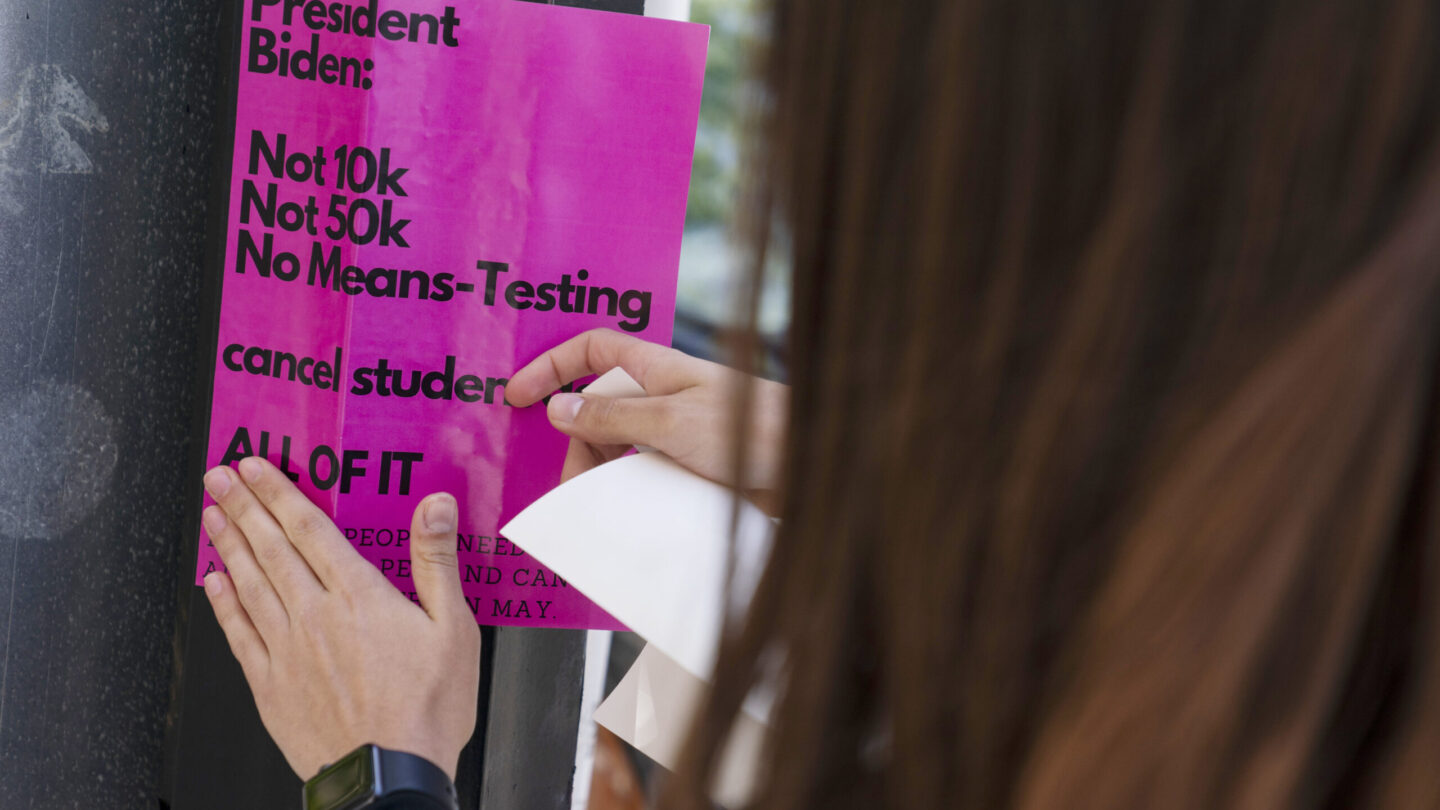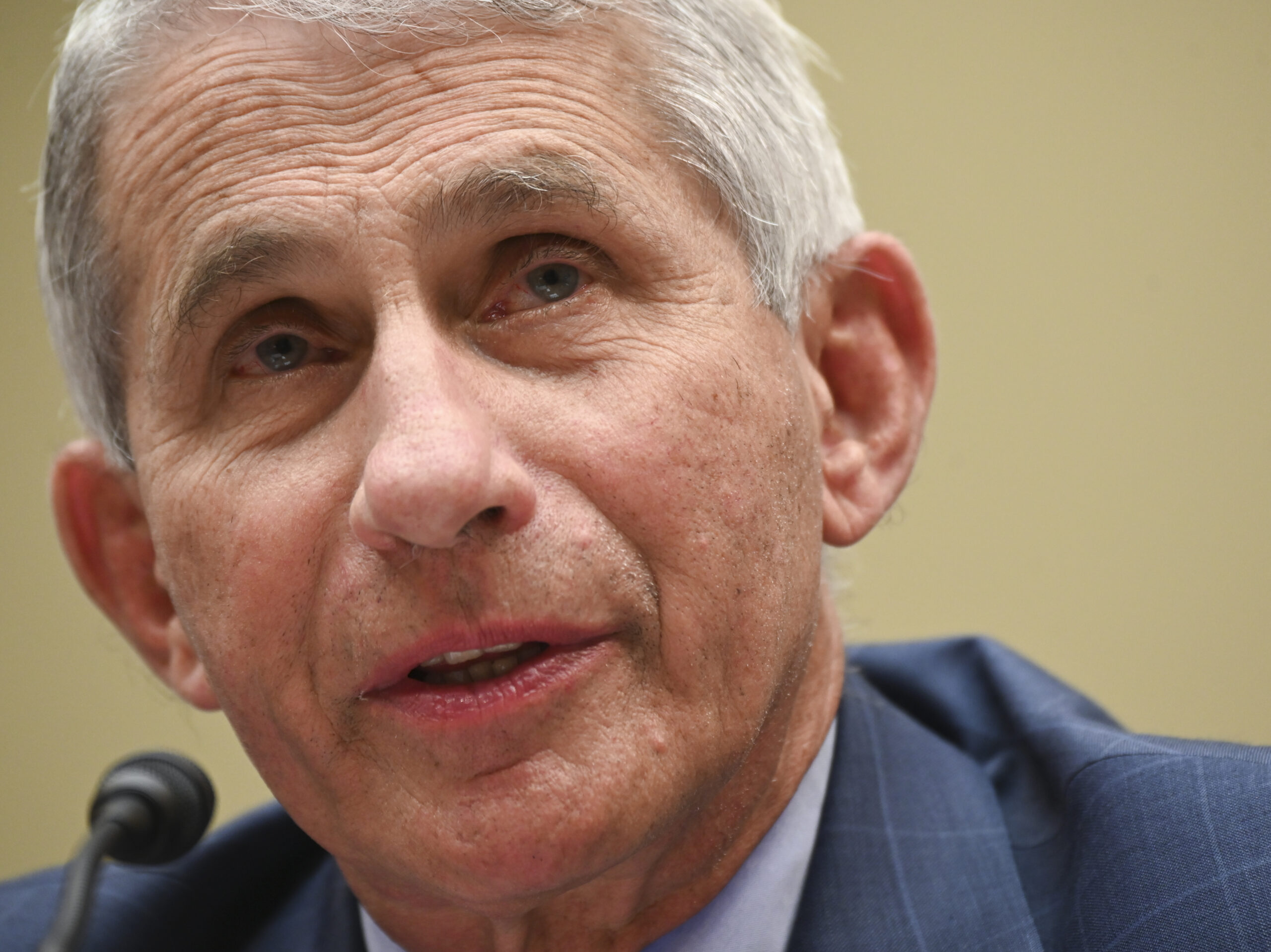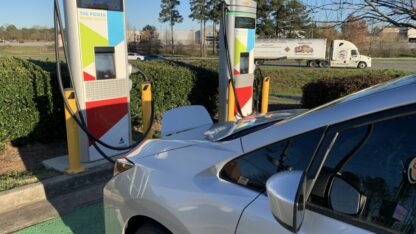William Alexander was ecstatic when he read President Joe Biden’s tweet on Wednesday, announcing the administration’s student loan forgiveness plan.
“Literally life-changing,” he says.
The news means that his wife will have $20,000 of her debt wiped, since she received Pell Grants in school and the couple makes less than $250,000 a year. Alexander, who lives in Jacksonville, FL, also had his own loans forgiven earlier this year under the borrower’s defense rule — which allows borrowers to ask the Department of Education to erase their student debt if a school lied to them about things like job prospects or potential salaries.
“The admissions advisor told me that there was a guaranteed career waiting for me,” Alexander says of the for-profit college he applied to in 2015. “They told me that my total tuition would be about $8,000, and instead it turned out to be close to $50,000.”
He struggled to make his payments, so he filed a borrower defense claim. This year, he got notice that the entire balance of his loans was being forgiven.
“I was blown away,” he says, laughing. “I wasn’t expecting this at all. It put a huge smile on my face, of course, when I got it. And, you know, I ran into the house telling everyone, ‘Hey, my student loans are getting canceled, my student loans are getting canceled.’ So yeah, I’m happy as a pig in mud.”
Alexander says that after years of renting, he and his wife are looking at houses now. And he feels like he’ll have more time to volunteer in his community.
But while families like the Alexanders are rejoicing over some newfound financial freedom, the move has critics on both sides of the issue. Some say it’s not enough, while others say it shouldn’t have happened at all.
Not everyone is celebrating
Wednesday’s announcement joins the Biden Administration’s portfolio of policies attempting to ease the burden of student debt. It also stated that monthly loan payments would be paused one final time, until the end of 2022.
But many borrowers are still hoping for more relief. Jayson Douglas, a 29-year-old in Commerce, TX, owes almost $90,000 in student loans. He’s already working several jobs to offset the rising cost of living. So he’s dreading the end of the payment pause.
“My monthly payments are at $835 a month,” he says. “I really think that our government needs to cancel student loans altogether. Or at least cancel the interest and go back to the original borrowing principal.”
He says while he understands how many families will be thrilled with the latest announcement, it wasn’t what he was hoping for.
And he isn’t alone in his disappointment. Pari, a 51-year-old paralegal who didn’t give her last name for privacy reasons, wants to see all student debt canceled, too. And she feels angry when she sees it compared to other government debt forgiveness.
“PPP loans, plus interest, were forgiven without question or explanation,” she says. “Millionaires and big corporations got yet another blank check.”
Pari has student loans more than 20 years old. As a single mother with one source of income, she’s had to pause the payments several times. Interest accumulated and she now owes more than she originally borrowed. Two of her kids are in college now, so she has also taken out two PLUS loans to pay their tuition and expenses. She says she never had a chance to build any savings, so she didn’t have another choice.
Her debt currently totals more $200,000.
“The weight of the student loans bears on every other decision that I tried to make,” she says. “Homeownership and all of that. The compound interest is just crippling. It just really feels like robbery. And I’m hoping that this nightmare ends.”
At the root of a crisis
Pari’s PLUS loans highlight the need for a longer view on higher education costs. What about the generation currently planning, applying and packing for college, signing promissory notes as a new school year looms? How can the root causes of the student debt crisis be addressed?
“I think that debt cancellation is the first step,” says Jared Bass, senior director for higher education at the Center for American Progress. He says increasing access to grants and cutting overreliance on loans is key. “Loans are the No. 1 form of assistance that we provide to students. So it’s no wonder that we have a student debt crisis.”
He also wants to see the cost of college addressed immediately. And says there needs to be a way to hold colleges accountable when students don’t get the promised education that helps them compete in the job market and become economically secure.
And speaking of promises, Bass also points out that debt forgiveness as a concept is not new.
“We have public service loan forgiveness. We have income-driven repayment, which are both repayment options that promise debt forgiveness or debt cancellation already within the higher education system,” he says.
But, he said, the Government Accountability Office and other government watchdogs have found that those programs have not been working.
“There’s a question of fairness to borrowers who were hoping to rely on those programs in order to see some debt relief,” Bass says. “Those programs have not worked. So debt cancellation, especially one that’s broad based, could be seen as, you know, making good on the government’s promise to those borrowers.”
The concept of fairness has also come up repeatedly among critics of student debt forgiveness. A common sentiment has been: What about those who already paid off their loans? Or didn’t take out loans at all? How is this fair to them?
Pari thinks a lot of people who feel that way have no idea how expensive higher education really is these days. She says that avoiding loans is a privilege and likely means that someone either had other financial help or “went to school during a time when a college credit cost $30.”
“The days of going to college and working a job part-time to pay for it? That’s nonexistent now. And has been for the last 20 years,” she says.
Pari also wants to remind people of “the added layer” of her experience as a Black woman.
“America has made it very clear that they really don’t feel Black people all that much,” she says.
Black college graduates owe $7,400 more on average than their white peers, according to a 2016 Brookings analysis. Because of higher interest rates and accrual on average, black graduates hold almost $53,000 in student loan debt four years after graduation — nearly twice as much as their white counterparts.
Education Secretary Miguel Cardona told NPR after the announcement that the Pell Grant rule in the latest announcement considered those numbers.
“Black Americans are two times more likely to be Pell recipients,” he says. “So, you know, they’re more eligible now for the $20,000 versus the $10,000. And we know that 1 out of every 4 Black Americans will receive total debt cancellation after today’s announcement.”
Jayson Douglas, who is also Black, says this is ultimately a question of access and wants to see the government address that with more than a one-time fix.
“Not everyone was afforded the same opportunities. And we really need to be advancing the conversation around equity, predatory lending and education,” he says. “However, today is still a day to celebrate and think about the impact that this decision has made for millions of families across our country.”
As for when borrowers can expect that promised relief on their loans, Secretary Cardona called that “the million dollar question.”
“It’s really important that folks know that we’re also improving a system that was broken and that was antiquated,” he said. “The Federal Service Loan Administration has really gone through some overhauls to make the process smoother. So what we’re asking folks to do is visit studentaid.gov/debtrelief and sign up for automated emails so that more information can come.”
Copyright 2022 NPR. To see more, visit https://www.npr.org.
9(MDAxODM0MDY4MDEyMTY4NDA3MzI3YjkzMw004))

9(MDAxODM0MDY4MDEyMTY4NDA3MzI3YjkzMw004))









